Following the Mi 10T series’s success, Xiaomi is back with another smartphone now focused on the budget segment. With the Mi 10i, the brand is trying to replicate the Redmi K20 series’s magic under the INR 25,000 price bracket.
The Mi 10i also marks the brand’s first budget 5G smartphone, following the Mi 10 5G and Mi 10T series. On paper, the Mi 10i promises to deliver a punch while being future proof. The phone at the time of launch is available in two flavors, with the third option to come later.
We got our hands on a Mi 10i 6GB RAM variant in the first sale and have been using the phone extensively for a week. According to us, the phone definitely packs a punch for the INR 22,000. Let’s find out more in the full review.
Xiaomi Mi 10i 5G Specifications
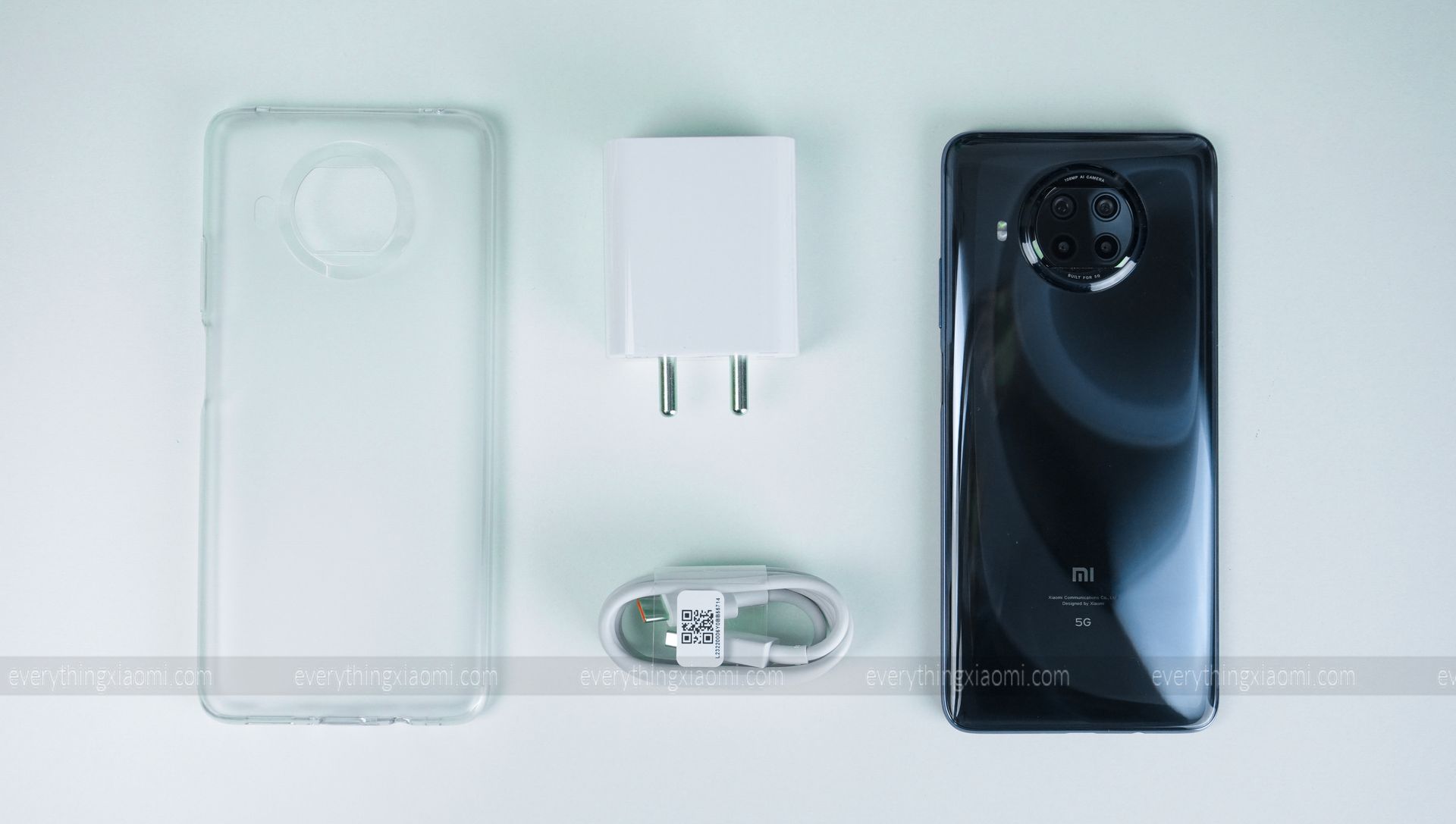
Before starting with the Mi 10i 5G review, let’s have a look at the phone’s specifications.
- Display: 6.67-inch IPS LCD display, FHD+ resolution, 120Hz refresh rate
- CPU: Octa-core Qualcomm Snapdragon 750G 5G Processor
- RAM: 6/8GB
- Storage: 64/128GB internal storage, expandable up to 512GB
- Software: Android 10 (MIUI 12)
- Main Camera: 108MP (f/1.8, PDAF) + 8MP ultra-wide (f/2.2) + 2MP (f/2.4) depth sensor + 2MP (f/2.4) macro lens
- Selfie Camera: 16MP (f/2.5) wide
- Connectivity: USB C, Wi-Fi 802.11ac, Bluetooth v5.0, GPS/ A-GPS, 3.5mm headphone jack, FM Radio
- Cellular: Dual SIM
- Fingerprint Scanner: Yes, side-mounted
- Battery: 4,820mAh, non-removable
Box Contents
Here’s a complete list of items you get inside the box:
- Xiaomi Mi 10i 5G smartphone
- Fast Charger
- USB Type C Cable
- TPU Case
- Sim Ejector Tool
- Documentation
Design
For the Mi 10i, Xiaomi went for a 10 series branding, but the phone is completely different from the Mi 10 or the Mi 10T series. This phone somewhat resembles the Poco X3 because of the circular rear camera module, sheer size and weight, and the 6.67-inch LCD panel upfront.
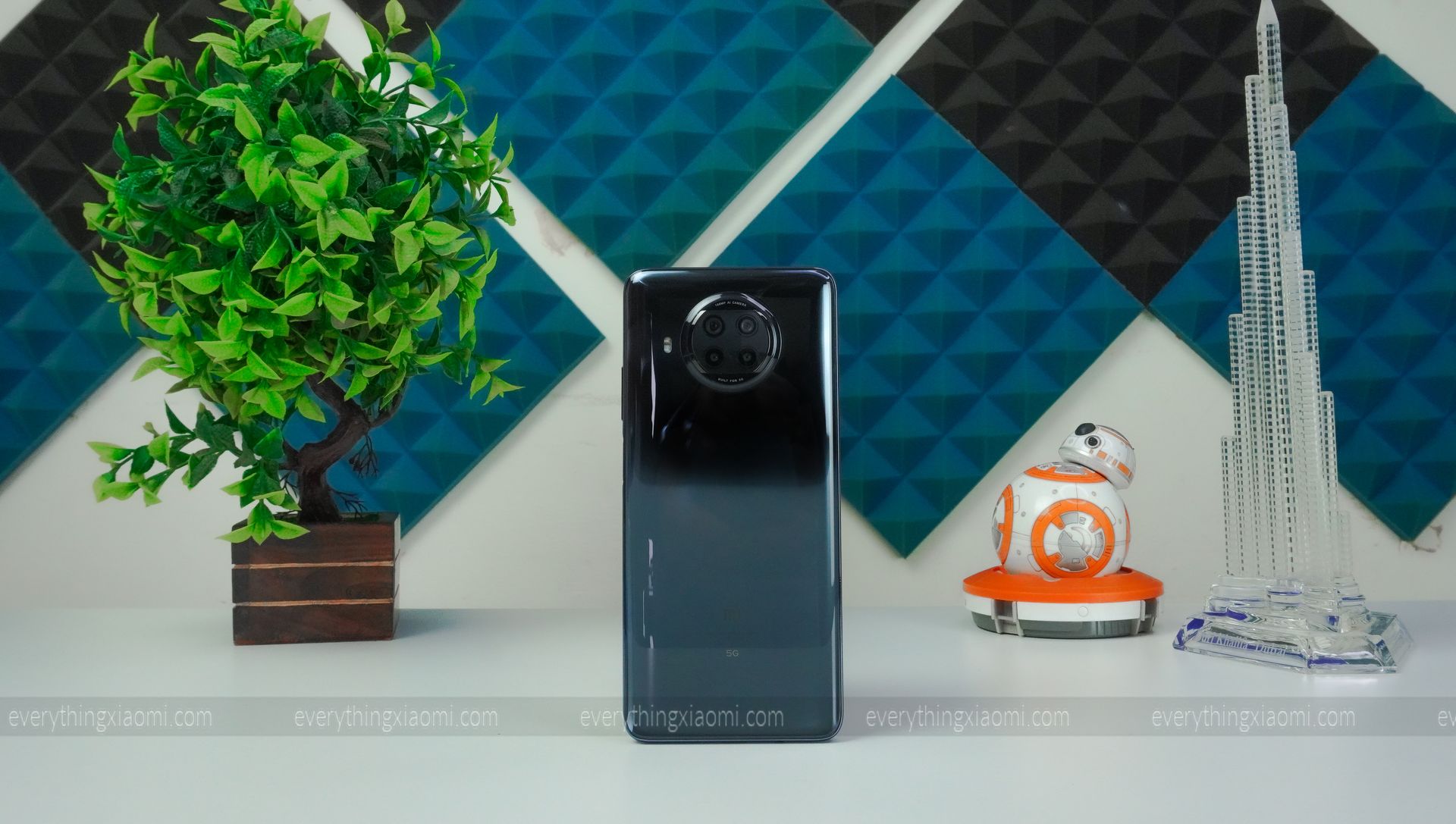
The phone is made out of polycarbonate with Gorilla Glass on both the front and back. In terms of finish, we get a matte finish on the back, prone to fingerprints, while P2i coating upfront does the job quite well. When going through the phone design, we see a large circular rear camera module in the center. Due to the large sensor size, the module protrudes a bit, and to protect it from any damage, a case is a must.
Instead of going for a center-mounted fingerprint sensor, Xiaomi went with a side-mounted one, which the brand seems to have perfected by now. Coming to the button placement, the power button doubles as a fingerprint, and the volume rockers are located on the right side of the device. A SIM tray on the left-hand side, followed by the speaker grill, USB Type C port, microphone, and a 3.5mm headphone jack at the bottom. Flipping the phone relevels the massive 6.67-inch Full HD+ display with an average-sized chin.
The phone has a solid build, despite packing a large battery and display, Xiaomi has done a phenomenal job with the weight distribution, which eliminated single-handed usage fatigue.
Display
The Mi 10i 5G sports a 6.67-inch IPS LCD panel with a Full HD+ resolution. The panel used here seems similar to the one being used on the Poco X3 since the performance is quite similar. We get 84 percent of the NTSC gamut, which isn’t great, but the panel is HDR10+ certified. The display has a maximum brightness of only 450nits, which is low, but then the outdoor legibility is decent.
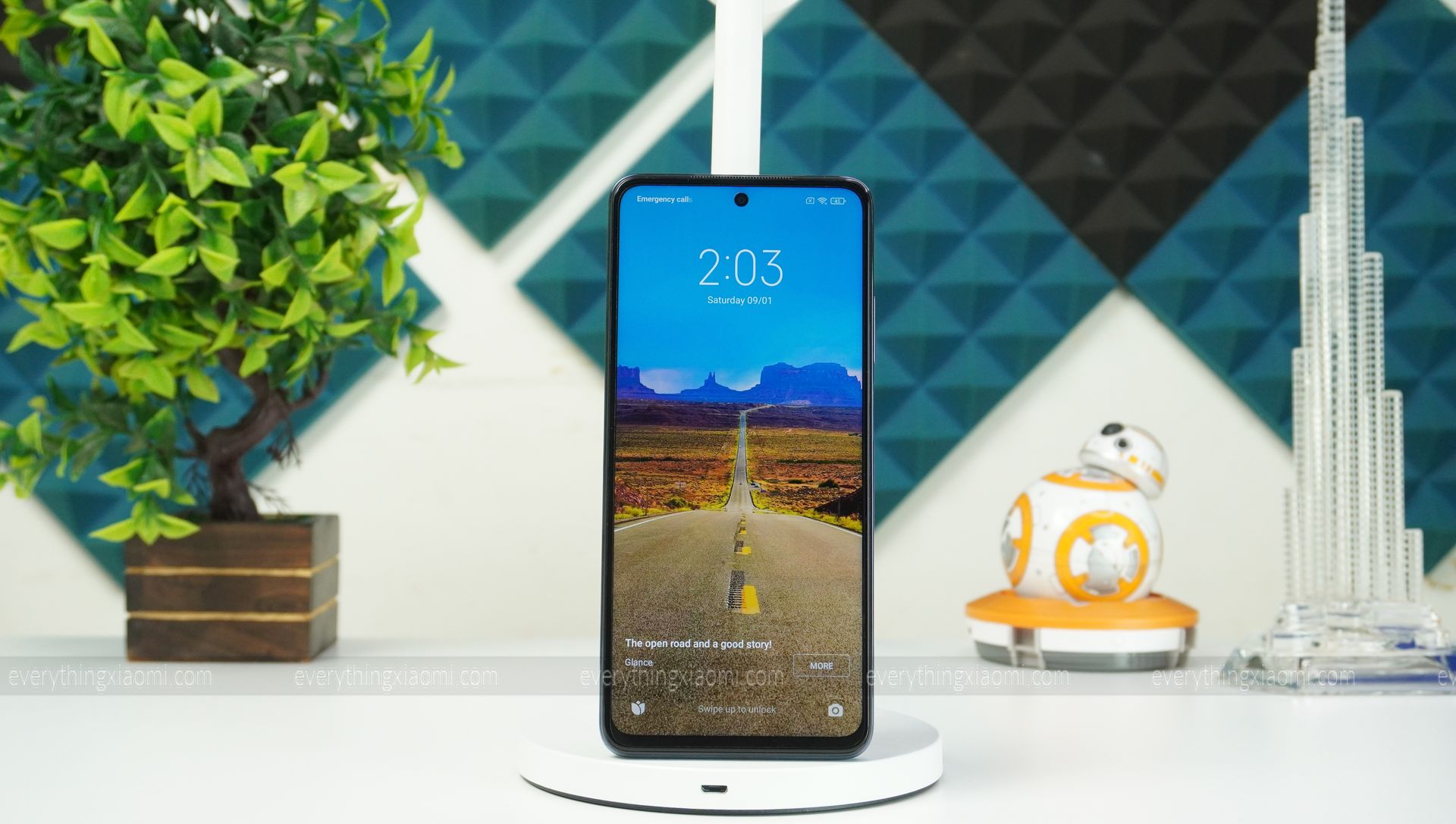
The colors are well balanced and can be tweaked further via the display settings. We also get the adaptive refresh rate here, which can scale between 30Hz and 120Hz in six steps. According to Xiaomi, the panel will automatically match whatever content you’re playing. This is a nifty feature and has a positive effect on battery life.
Since this is an LCD panel with a center punch-hole, there is the obvious shadowing around the selfie shooter, which on our unit is not that pronounced but might differ for you. Xiaomi managed to tone down the bezels, which are good considering that this is a Mi series product.
Software
The Mi 10i comes with Android 10 and Xiaomi’s customized MIUI 12 skin on top. Lately, Xiaomi has been very consistent with its updates, and while we don’t get Android 11 right out of the box, we do get the latest security patch. There is no word on when the phone will get an Android 11 update, but we hope it should come with the new MIUI 12.5 global update.
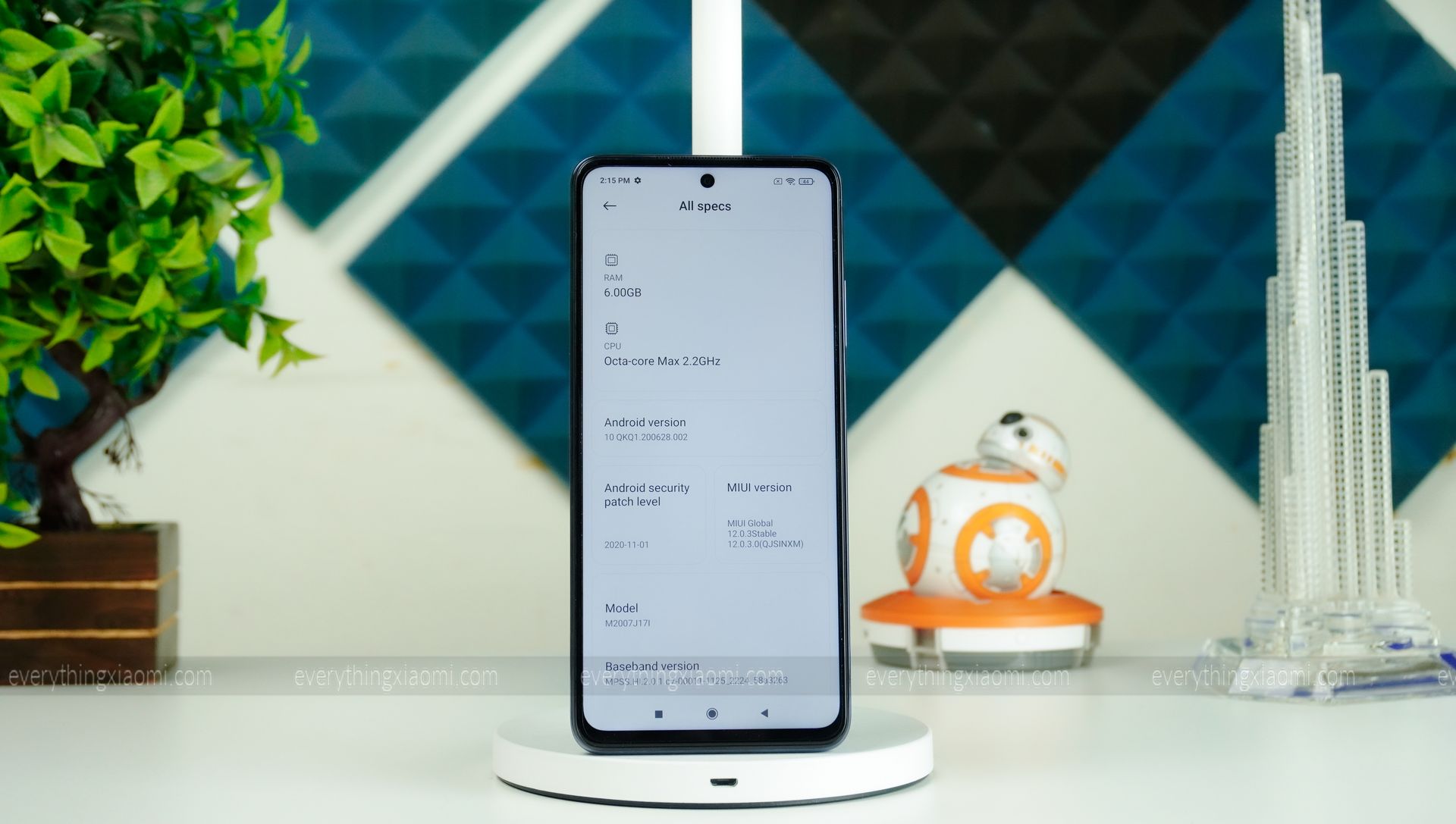
At the launch, Xiaomi stressed on the phone having ‘Clean MIUI 12’, which falls flat when you set up the phone. There’s a ton of bloatware and promoted apps, and while the phone might not coerce you into downloading those apps, you definitely get sponsored content here and there throughout the UI. Some of these apps and suggestions can be uninstalled/eliminated by digging down into the settings on a positive note.
Apart from this, we get the familiar MIUI that we’ve known by now. You get a ton of customization options, right from the themes, to selecting custom fonts and icons and more. We get features like battery saver modes, new gestures, Second Space for private data, Lite Mode UI, Game Turbo, Digital Wellbeing, to name a few. With this new MIUI 12 build, Xiaomi has refined the animations, but it’s still very animation heavy, and you get to unlock more features once you opt for the Mi flagship series.
Performance
The Mi 10i comes powered by the Qualcomm Snapdragon 750G processor, announced just a few weeks back. It is quite comparable to the Snapdragon 765G, with some improvements done on the Kyro cores and slightly downgrading the GPU. That being said, it is still a very capable chipset in delivering a decent overall experience.

Zooming past the UI is fun, thanks to the 120Hz refresh rate. We did stress the phone quite a bit during our testing period, and apart from the occasional UI stutter, we didn’t really run into any serious issues. This occasional stutter can be attributed to the fact that the MIUI 12 is still very animation heavy, and we hope this gets fixed in the MIUI 12.5 update. The phone comes with either 6GB or 8GB RAM, and depending on your variant, the mileage might vary but overall, we get the same level of RAM management on either of the models.
We did see here first is the use of UFS2.2 storage, which is fast and gets read speeds of 900MBps+ and writes speeds of 450MBps+. We did a bit of gaming and found the phone capable enough to run all the popular titles at high graphic settings. Thermal management is on-point, and even with stress tests, the phone didn’t get hot enough. The phone also gets a pair of stereo speakers that, in our opinion, are decent at best.
Cameras
As mentioned above, the Mi 10i comes packed with a quad rear camera setup with the 108-megapixel primary sensor made by Samsung. This is assisted by an 8-megapixel f/2.2 ultra-wide camera, 2-megapixel macro camera, and 2-megapixel depth sensors. Judging by the other three sensors, it should be clear by now that the star of the show here is the 108-megapixel sensor while the others are there due to cost-cutting.
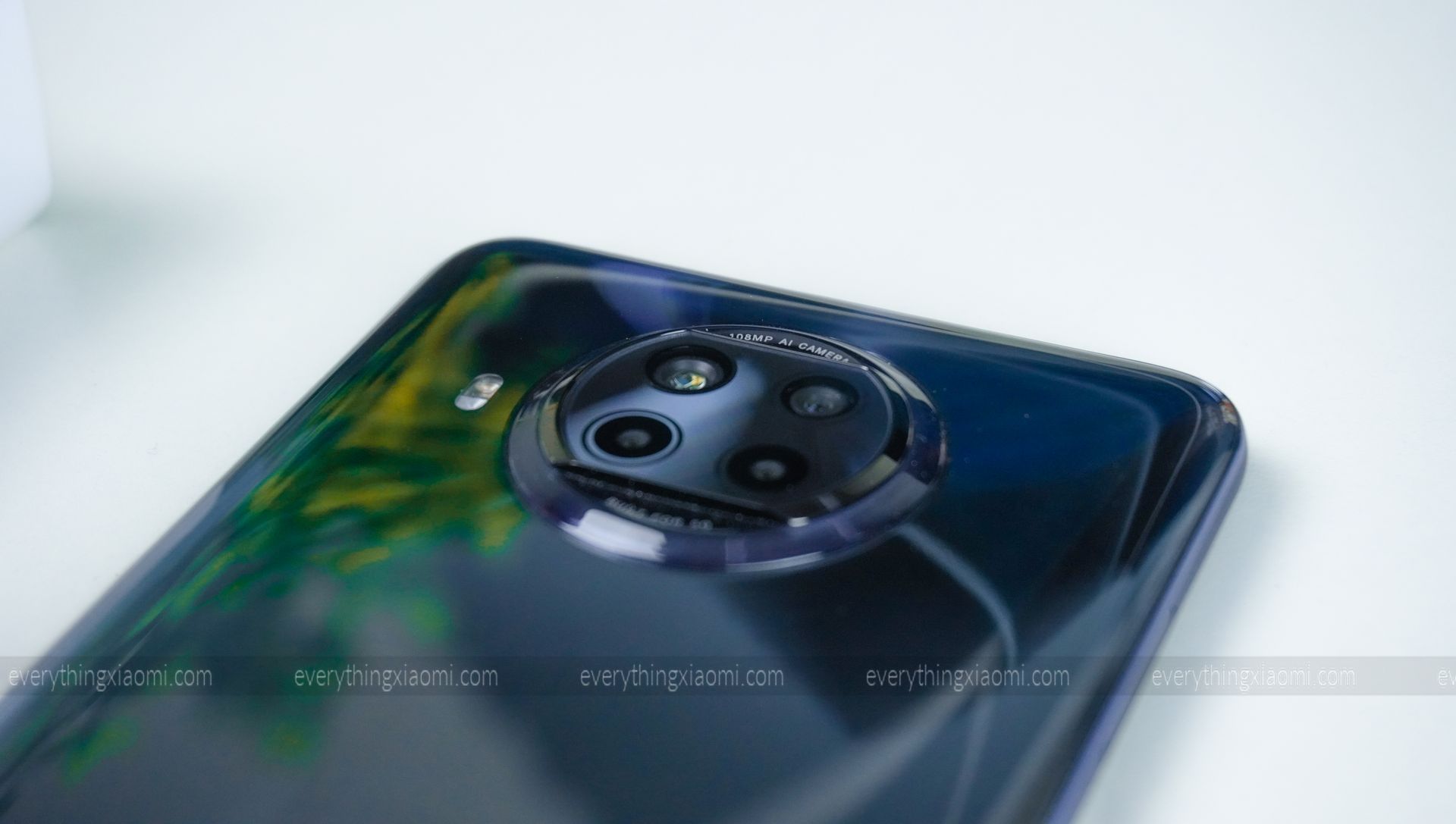 The main sensor shoots 12 megapixels by default with a module combining nine pixels in one. Shots taken in broad daylight come out decent with enough details. Though the phone has the same sensor as seen on the Mi 10T Pro, the difference is in the ISPs. Xiaomi’s imaging team has been lately churning out tight algos that help the sensor get the exposure on-point. We do have the option to take full 108-megapixel shots with the phone taking a couple of seconds in processing and storing those.
The main sensor shoots 12 megapixels by default with a module combining nine pixels in one. Shots taken in broad daylight come out decent with enough details. Though the phone has the same sensor as seen on the Mi 10T Pro, the difference is in the ISPs. Xiaomi’s imaging team has been lately churning out tight algos that help the sensor get the exposure on-point. We do have the option to take full 108-megapixel shots with the phone taking a couple of seconds in processing and storing those.
The main advantage of using this sensor is the ability to crop out images in post, but this is surely not a substitute for a telephoto lens. While we aren’t disappointed with the main sensor here, we feel like using a 64-megapixel main sensor here would’ve been a more sensible choice. There are many customization options in the camera app, like a bunch of artsy filters apart from the basic photo, video, panorama options.

Coming back to the camera performance, images taken in challenging lighting were less sharp with high shutter lag. Kicking off the Night mode did help to bring out more details and better colors. As for the other three sensors, the image quality is just passable.
For selfies, there’s a 16-megapixel camera with an f/2.5 aperture. The shots taken by this sensor were sharp, had excellent details if you turned off the skin smoothing, which is turned on by default.
Battery
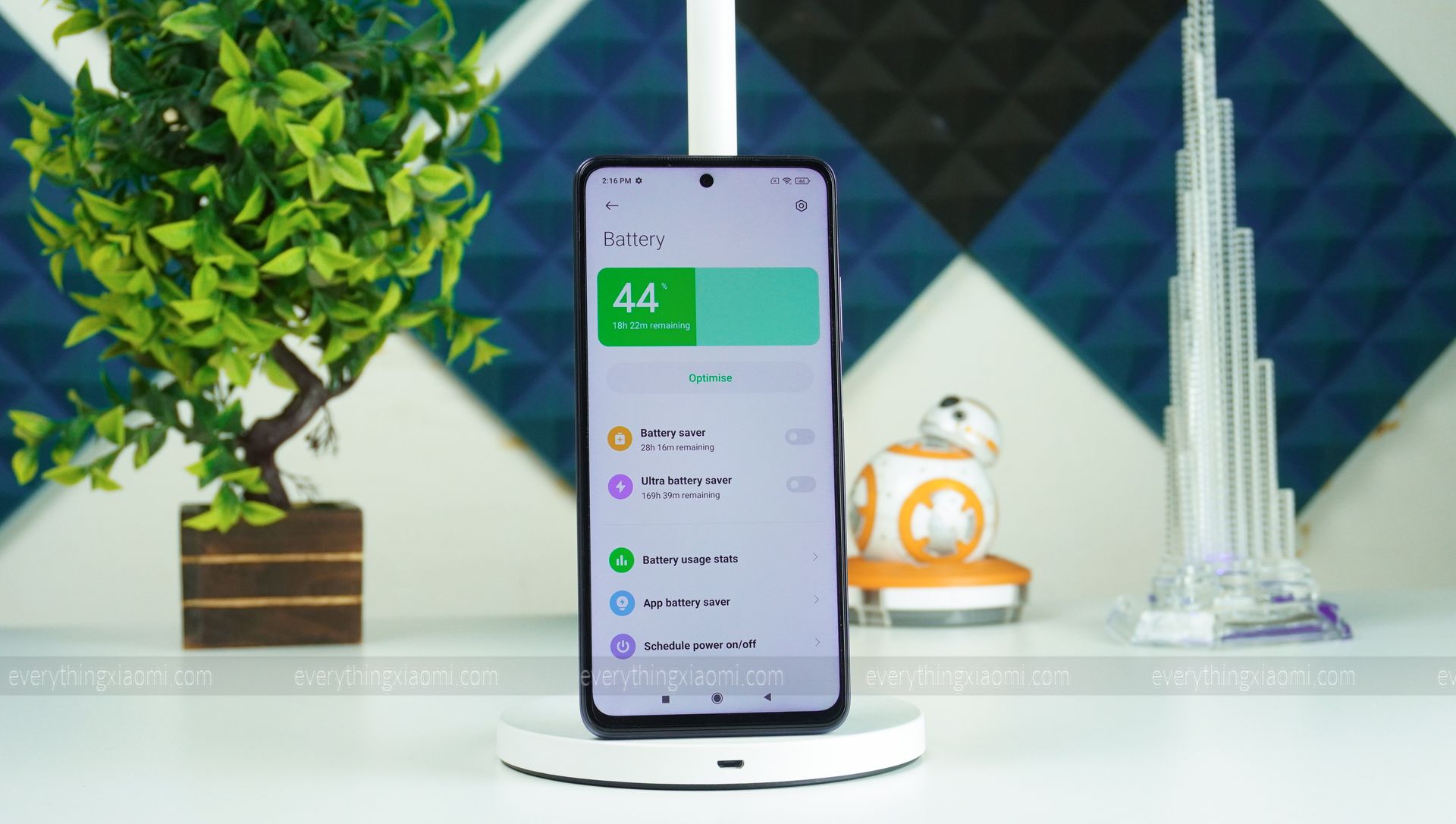
The phone gets a 4,820mAh battery, which is slow considering that 5,000mAh batteries are the norm for the Redmi and Poco line-up at this point. That being said, in our tests, the phone lasted close to two full workdays. With the bundled charger, we could top up the phone in an hour, which is in-line with what the company claims.
Verdict- Should you buy it?
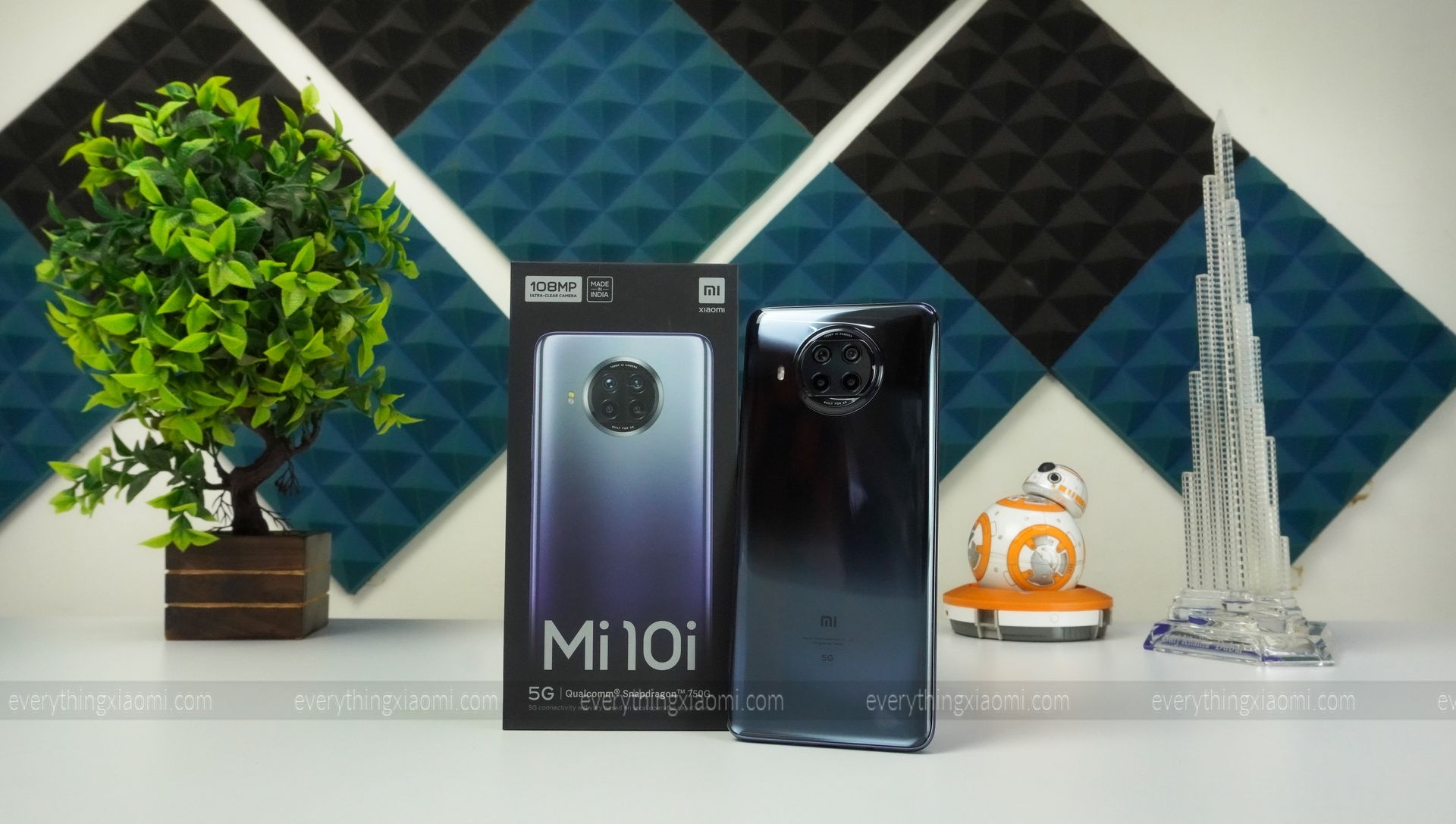
Xiaomi has been cautious with the pricing this time, and they didn’t want to repeat the K20 series fiasco. All three variants of the phone are under INR 25,000. For that amount of dough, the phone on paper is highly competitive. You get a decently build phone with quality internals and, of course, 5G.
Perhaps, the main selling point is that 108-megapixel camera that’ll attract most of the audience. While the camera performance is decent, there is still space for improvements, and we hope the brand works on it. Apart from this, we did like the battery performance, high refresh display, and overall vibe of the product.
With the card offers and discounts taking the phone’s price close to INR 20,000, especially at that price, the phone is an excellent buy even for the people looking at the Redmi Note 9 Pro Max or the Poco X3 within the Xiaomi family.
Mi 10i Specifications
General
| Price (₹) | 20,999 / 21,999 / 23,999 |
| Variants | 6/64 GB, 6/128 GB, 8/128 GB |
| Colour Options | Pacific Sunrise, Midnight Black, Atlantic Blue |
| SAR Value | 1.17 W/kg (head) 0.86 W/kg (body) |
Network & Connectivity
| Supported Networks | 2G, 3G, 4G LTE, 5G |
| Wi-Fi | Wi-Fi 802.11 a/b/g/n/ac, dual-band |
| Bluetooth | v5.1 |
| SIM Slot | Dual (nano) |
| Memory Card Slot | Hybrid (SIM+Memory Card) |
| USB Port | USB Type-C |
| NFC | |
| GPS | GPS, with dual-band A-GPS, GLONASS, BDS |
Build & Design
| Dimensions [LxWxD] | 165.4 x 76.8 x 9 mm |
| Weight (grams) | 214.5 g |
| Chassis/Frame | Metal (Aluminum Alloy) |
| Front Protection | Gorilla Glass 5 |
| Back Material | Gorilla Glass 5 |
Performance
| Chipset | Qualcomm Snapdragon 750G |
| Processor | Octa-core (2x2.2 GHz Kryo 570 & 6x1.8 GHz Kryo 570) |
| GPU | Adreno 619 |
| RAM | 6 GB, 8 GB |
| RAM Type | LPDDR4x |
| Storage | 64 GB, 128 GB |
| Storage Type | UFS 2.2 |
| OS | Android 10 |
| UI | MIUI 12 |
Display
| Screen Size (Inches) | 6.67 |
| Screen Type | IPS LCD |
| Screen Resolution | 1080 x 2400 pixels |
| Refresh Rate | 120 Hz |
| Aspect Ratio | 20:9 |
| Touch Sampling Rate | 120 Hz |
| Pixel Density (PPI) | 395 ppi |
Cameras
| Rear Camera | Quad |
| Rear Camera Specs |
108 MP, f/1.8, 26mm (wide), 1/1.52", 0.7µm, PDAF 8 MP, f/2.2, 120˚ (ultrawide), 1/4.0", 1.12µm 2 MP, f/2.4, (macro) 2 MP, f/2.4, (depth) |
| Rear Camera Features | Dual-LED dual-tone flash, HDR, panorama, 4K@30fps video recording |
| Front Camera | Single |
| Front Camera Specs | 16 MP, f/2.5, (wide), 1/3.06", 1.0µm |
| Front Camera Features | HDR, 1080p@30fps video recording |
Battery
| Battery Capacity | 4080 mAh Li-Polymer |
| Fast Charging | |
| Charging Rate | 33w |
| Wireless Charging | |
| Reverse Charging |
Extra Features
| Fingerprint Sensor | Power Button Mounted |
| Face Unlock | |
| Speakers | Stereo |
| 3.5 mm Audio Jack | |
| IR Blaster | |
| FM Radio | |
| Sensors | Accelerometer, Gyro, Proximity, Electronic Compass |

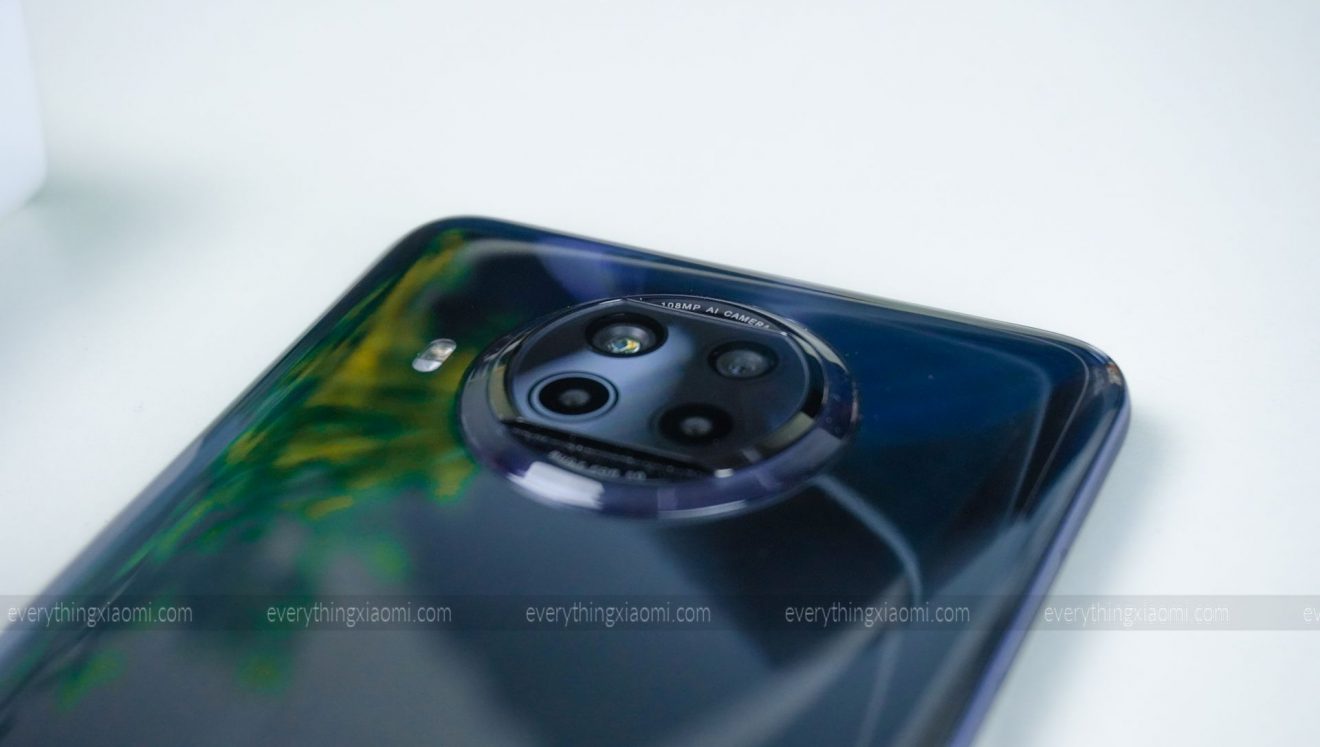
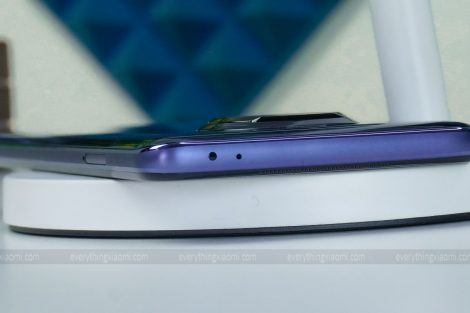
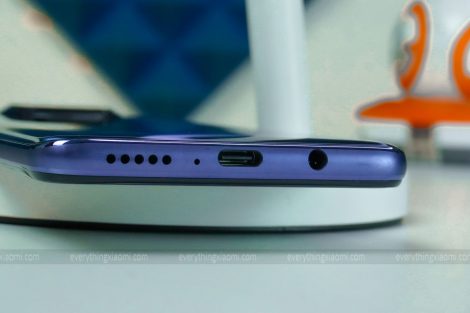
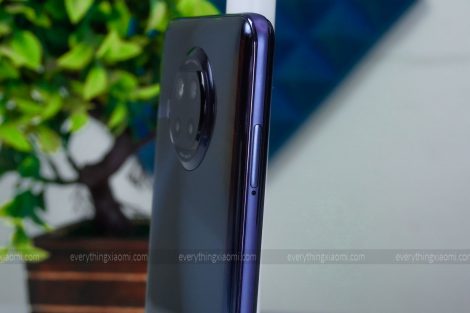

















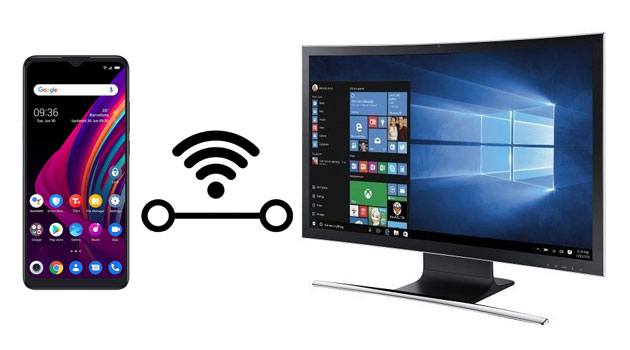
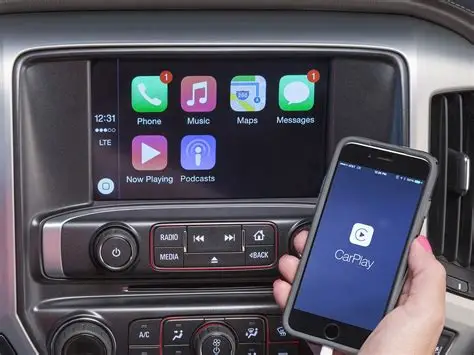
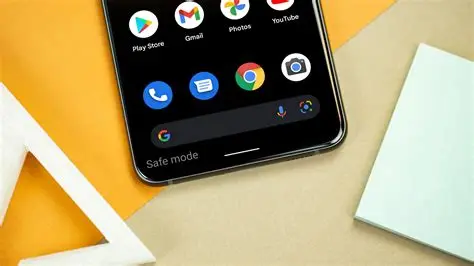

Add Comment